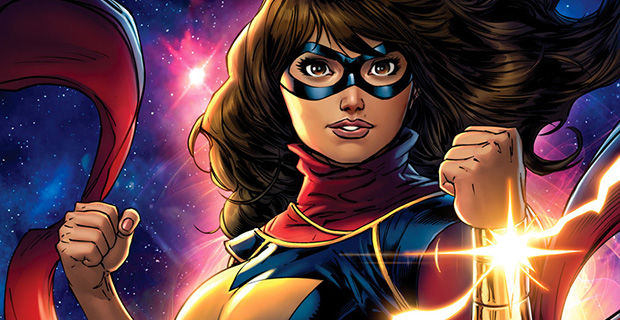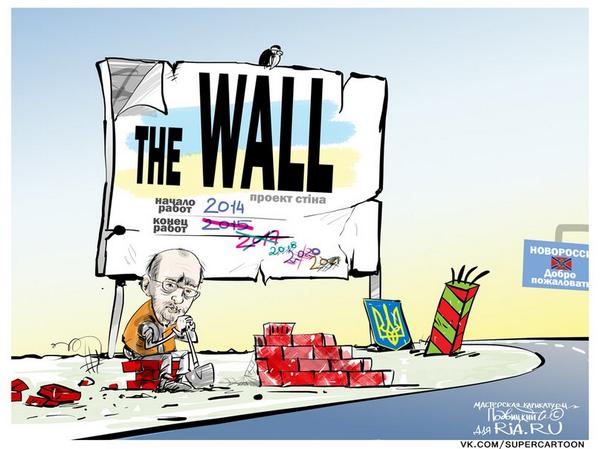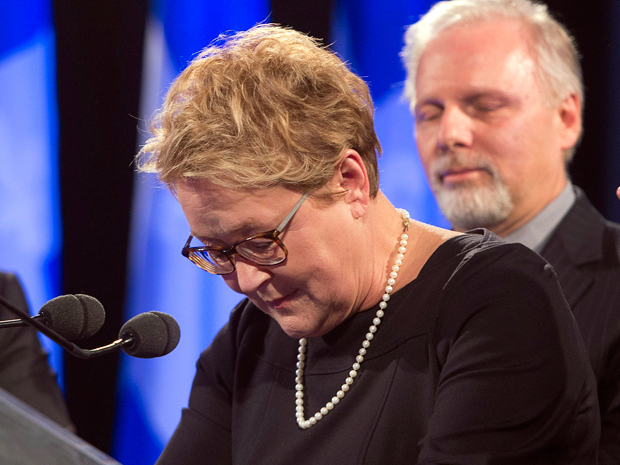The New Ms. Marvel comic series is the first series to ever feature a Muslim superhero as a titular main character. In the wake of the mass media juggernaut of superhero films, reading comic books has become a more respected pastime, digesting cartooned metaphors on the human condition. Ms. Marvel tells the story of Kamala, a first generation American Muslim of Pakistani descent who develops shape shifting powers after her immersion in a mysterious fog.
Public attention for Ms. Marvel’s release gained traction from several mainstream new sources around the globe. Graphic novel noteworthiness in and of itself is not new — in fact, both the New York Times and Entertainment Weekly regularly review graphic novels. Comic book artists have received Pulitzer Prizes and have had their works on display in various art museums around the globe. However, an unprecedented level of global attention and speculation has been directed towards the religious aspects of Kamala’s character — a character in a series that had yet to be printed. Such international scrutiny demonstrates the Western-Islam dichotomy and Islamophobia sensitivity globally pervading our post-9/11 society.
Recently, a bearded and turbaned Captain America was spotted roaming the streets of New York. The costumed hero was none other than devout Sikh Vishavjit Singh, who largely succeeded in his attempt to make Americans question the true identities of their favourite heroes. New York pedestrians of all ages snapped quick pictures of the controversial figure, many of them applauding his initiative and followed in his suit. Others seemed more resistant or wary of this character interpretation. Captain America is meant to represent the “ideal” American citizen. To some, it seems, this translates into a muscular, blond Caucasian with Christian beliefs — not a skinny Sikh with rectangular glasses. In a way, Vishavjit’s act of costumed protest demonstrated the growing need for heroic portrayals of Middle Eastern cultures and religions in Western comics.
Sadly, these much needed, “alternative” heroic characters have taken a lot of time to emerge. DC comics’ first depiction of a Muslim Green Lantern did not feature a six-pack laden hero defeating super villains, but a federal agent chasing down terrorists. While hailed as progressive, the message was critiqued as “an episode of 24 that ends with a Green Lantern ring instead of a Jack Bauer torture scene. It’s not that [we] object to the political content, it’s just so ham-fisted it hurts.”
Kamala’s interactions with other characters in Ms. Marvel are a refreshing mix of both her personal struggles with her Muslim identity and the trappings of just another, awkward teenage girl.
Marvel had its own media missteps when it came to depicting Muslim women. Character Sooraya Qadir, known under her superhero alias as Dust, was created shortly after 9/11, in 2002. Portrayed as a conservative Muslim, Sooraya wore an Abaya — a type of cloak that Marvel often erroneously referred to as a burqa. Sooraya also spoke very little, only speaking up to beg Allah’s forgiveness and remind readers once more of her typecast faith.
In stark contrast to Sooraya, one could cite Monet St. Croix, known under superhero alias M. Created in 1994, Monet was only revealed as a Muslim in 2011. The latter character was cast as a lot more liberal, if not promiscuous, her costume showing a lot of skin even by western standards. In fact, Monet’s faith often seems all but forgotten by the series’ writers. Her identity as a Muslim American was only “in spirit”, otherwise removed from any tradition. Unfortunately, the Marvel series never scripted any meeting between their token Muslim heroes, or between any non-Christian religious characters in general. The latter would have provided a much needed depth and meaning to these character’s religious identities beyond the repetitive, Islam-Christian ethical tolerance dialogue.
Ms. Marvel hopes to fulfil this long overdue role, allowing multiple non-Christian characters to finally interact. Kamala’s parents accuse her brother of using his prayer as an excuse not to get a job. Kamala’s friend is told to stop wearing her Hijab, as her father believes her faith to be a temporary “attitude” of sorts, as opposed to a genuine aspect of her identity. Kamala herself abides to sharia law in matters of pre-marital sex and drinking — yet she also writes relatively graphic “my little pony Avenger” fan-fiction. Breaking free from previous plot clichés, Ms. Marvel’s storyline also touches upon the more subtle, well-intentioned biases that many Muslim women and girls are confronted with on a regular basis. “Your headscarf is so pretty, Kiki,” a classmate says to one of Kamala’s friends, “but…nobody pressured you to start wearing it, right? Nobody’s going to, like, honour-kill you?”
Kamala’s interactions with other characters are a refreshing mix of both her personal struggles with her Muslim identity and the trappings of just another, awkward teenage girl. Such a combination is crucial, for as stated by Kamala’s creator, Ms. Wilson, “it’s not just the lonely, comic-book-loving Pakistani teen who needs a hero like Kamala. It’s the people who look at that teen and only see a Muslim or a Pakistani instead of a whole person.”
Kamala’s societal struggles are further complicated by her shape shifting powers as a “Polymorph”. Wilson stated in an interview that the decision to make Kamala a Polymorph was to illustrate people’s common and unhealthy temptation of becoming whatever others want them to be. “In a way, you’re unpacking two stereotypes”, said Wilson, “one about Muslims and one about shape shifters, which I thought meshed nicely with the storyline. But it was a big risk. And I’m still having conversations about what lines to cross and which ones not to cross.”





